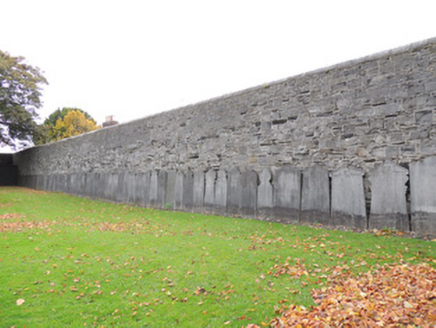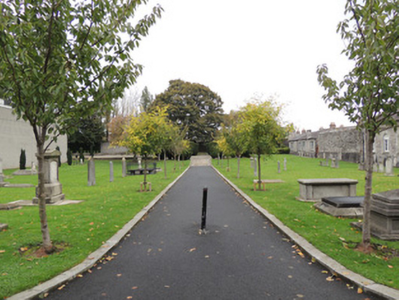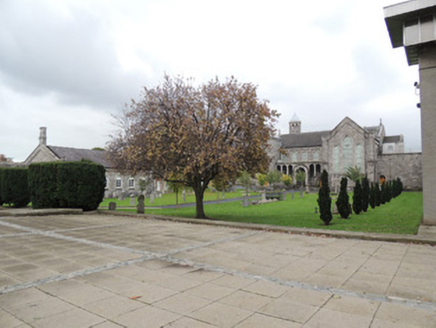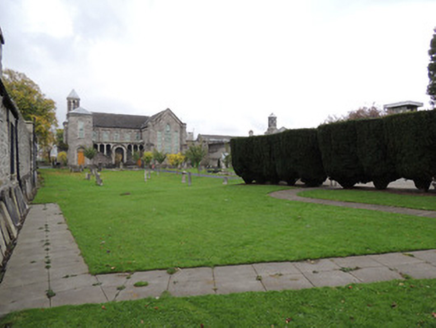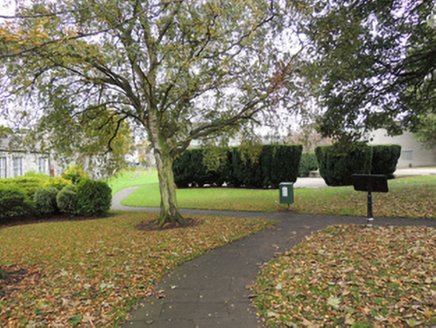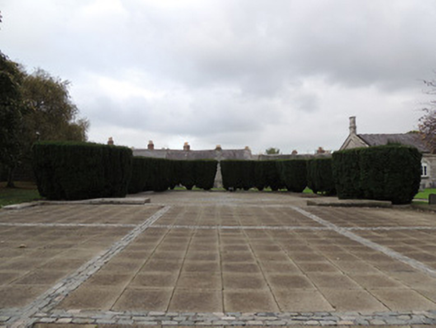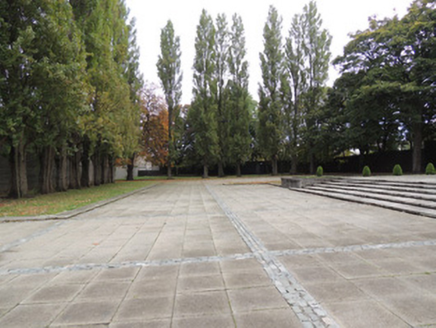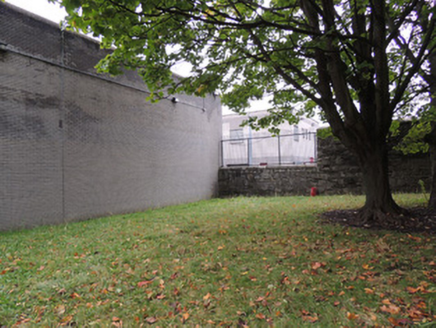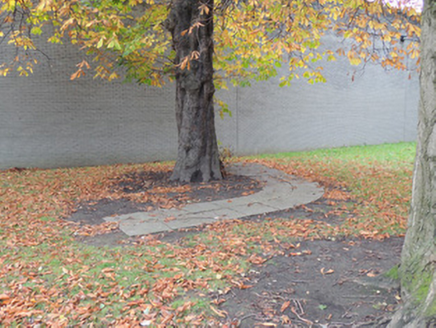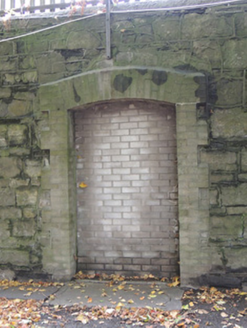Survey Data
Reg No
50070100
Rating
Regional
Categories of Special Interest
Artistic, Historical, Social
Previous Name
Garrison Church
Original Use
Graveyard/cemetery
In Use As
Graveyard/cemetery
Date
1845 - 1855
Coordinates
314138, 234722
Date Recorded
04/11/2012
Date Updated
--/--/--
Description
Graveyard, opened c.1850, in grounds of former barracks. Some roughly dressed limestone boundary walls to north, west, and south-east, having cut stone coping. Elliptical-headed door opening to former school master's quarters, now blocked. Central tarmacadam path, with granite kerbstones. Grave markers and tombs to east and west of path, and also re-sited, leaning against east boundary wall and walls of former schools to north. Paved paths through graveyard.
Appraisal
The military cemetery lies to the north of the Church of the Sacred Heart, the official church of the Irish Defence Forces. It is the final resting place of military personnel and their families, who would have lived in the surrounding area, attended the church, and whose children would have attended the garrison school. In the late-nineteenth century, the north end of the graveyard was converted to a playground for the schools, and a 1916 memorial was constructed in 1956. The graveyard is of historical and social importance as the place where the seven signatories of the 1916 Proclamation of Independence were buried in quicklime after their execution at Kilmainham Gaol in 1916. The graveyard forms part of a group of military-related structures, which includes the Church of the Sacred Heart to the south, military schools to the east, and Arbour Hill former detention barracks to the west.
